
Journal of Integrative Neuroscience
Scope & Guideline
Advancing Neuroscience Through Interdisciplinary Innovation
Introduction
Aims and Scopes
- Neuroscience and Neuropsychology:
Research addressing the neural underpinnings of cognitive processes, emotional regulation, and behavior, with an emphasis on understanding how brain function relates to psychological phenomena. - Clinical Neuroscience:
Exploration of neurological disorders and their treatment, including studies on neurodegeneration, stroke, epilepsy, and mental health conditions. This includes both clinical trials and observational studies. - Neuroimaging Techniques:
Utilization of advanced imaging modalities such as MRI, fMRI, and EEG to investigate brain structure and function, providing insights into neurological diseases and cognitive functions. - Neuropharmacology and Therapeutics:
Studies focused on the pharmacological treatment of neurological disorders, including the efficacy of novel compounds, traditional medicines, and interventions such as neuromodulation. - Neurodevelopment and Aging:
Research on the effects of aging and developmental factors on brain health, including studies on neuroplasticity and the impact of early life experiences on later cognitive function.
Trending and Emerging
- Machine Learning and AI in Neuroscience:
An increasing number of studies are utilizing machine learning techniques for EEG analysis, neuroimaging, and cognitive assessments, reflecting a growing integration of computational methods in neuroscience research. - Gut-Brain Axis Research:
There is a rising interest in the relationship between gut microbiota and neurological health, particularly concerning cognitive impairment and neuroinflammation, indicating a burgeoning field of research. - Neuroinflammation and Neurodegeneration:
Research exploring the role of neuroinflammation in various neurological disorders is gaining momentum, with implications for treatment strategies and understanding disease mechanisms. - Psychological and Neurological Interventions:
An increased emphasis on non-invasive therapeutic approaches, such as neuromodulation techniques (e.g., TMS, tDCS), highlights a trend towards innovative treatment modalities for mental health and neurological conditions. - Neuroethics and Societal Implications of Neuroscience:
Emerging discussions around the ethical implications of neuroscience research, particularly concerning neuroenhancement and the societal impacts of neurological disorders, are becoming more prominent in the journal.
Declining or Waning
- Traditional Neurology Focus:
There has been a noticeable decrease in studies centered purely on classical neurological conditions without integrating psychological or cognitive aspects, indicating a shift toward more interdisciplinary approaches. - Basic Neuroscience Research:
Basic science investigations that do not directly link to clinical applications or cognitive functions are being published less frequently, as the journal increasingly emphasizes translational and applied research. - Single Modal Studies:
Research focusing solely on one type of measurement or analysis (e.g., only EEG or only behavioral studies) is less common, with a trend towards integrated studies that combine multiple methodologies.
Similar Journals
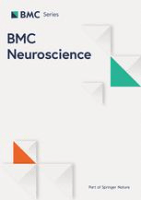
BMC NEUROSCIENCE
Exploring the Frontiers of Neuroscience ResearchBMC NEUROSCIENCE is a prominent open access journal dedicated to the dissemination of high-quality research within the dynamic and rapidly evolving field of neuroscience. Published by BMC, a well-respected leader in open access publishing, this journal facilitates the free exchange of knowledge since its inception in 2000. With the ISSN 1471-2202, BMC NEUROSCIENCE aims to address the diverse interests of the neuroscience community by covering a broad spectrum of topics, ranging from cellular and molecular neuroscience to general neurological studies, thus appealing to researchers, professionals, and students alike. Although it currently holds a Q4 ranking in Cellular and Molecular Neuroscience and a Q3 rank in miscellaneous Neuroscience categories, its commitment to advancing the understanding of brain function and disorders remains steadfast. The journal features a user-friendly Open Access model, ensuring that critical research findings are readily accessible to everyone, fostering collaboration and innovation in the field. As the journal continues to evolve towards its convergence years of 2024, it aspires to enhance its impact and global reach, making it a valuable resource for anyone interested in advancing neuroscience research.
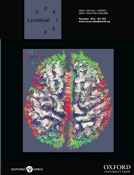
CEREBRAL CORTEX
Exploring the intricacies of the brain.CEREBRAL CORTEX, published by Oxford University Press Inc, is a premier journal dedicated to advancing the field of neuroscience, specifically focusing on the cellular, molecular, and cognitive aspects of cortical structure and function. With an impressive impact factor that situates it in the top quartile (Q1) of its categories for 2023, this journal holds significant relevance for researchers and professionals interested in the latest discoveries and methodologies in both Cognitive Neuroscience (ranked #31 out of 115) and Cellular and Molecular Neuroscience (ranked #48 out of 97). Operating without an open access model, it ensures rigorous peer review and dissemination of high-quality research from across the globe. Since its inception in 1991, CEREBRAL CORTEX has established itself as a critical platform for educators and inventors, pushing the boundaries of knowledge in understanding brain function and its implications for behavior. Researchers and students alike will find this journal an invaluable resource for both foundational and cutting-edge studies in neuroscience.
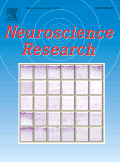
NEUROSCIENCE RESEARCH
Advancing the Frontiers of Neural DiscoveryNEUROSCIENCE RESEARCH, published by Elsevier Ireland Ltd, is a leading journal in the field of neuroscience, with a notable reputation for disseminating high-quality research that spans a variety of topics within the discipline. With an ISSN of 0168-0102 and an E-ISSN of 1872-8111, this journal serves as a vital platform for both established researchers and emerging voices in the field. Ranking in the Q2 quartile in both Medicine and Neuroscience categories, it has been recognized as a reliable source of innovative findings since its inception in 1984, with continuous publication through 2024. Although it does not currently offer Open Access options, the journal is indexed in Scopus, holding a significant position at Rank #48/113 in General Neuroscience, reflecting its contribution to advancing the understanding of neural mechanisms across various contexts. With its address anchored in Ireland, NEUROSCIENCE RESEARCH plays an essential role in bridging scientific inquiry and practical applications, making it an indispensable resource for researchers, professionals, and students dedicated to the burgeoning field of neuroscience.
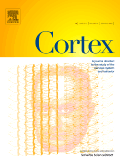
CORTEX
Transforming Knowledge into Practice in Cognitive ScienceCORTEX is a premier international journal published by Elsevier Masson, focusing on the cutting-edge areas of cognitive neuroscience, psychology, and neurology. With an impressive impact factor that places it in Q1 quartiles across multiple categories such as Cognitive Neuroscience and Neuropsychology, this journal serves as a vital resource for researchers, clinicians, and students alike. Established in 1964, CORTEX has continued to excel in disseminating high-quality scholarly work, offering insights that significantly enhance our understanding of the brain's functioning and behavior. Although not an open-access publication, it provides various access options to ensure the dissemination of knowledge is as wide-reaching as possible. As the field of cognitive psychology evolves, CORTEX remains at the forefront, fostering an environment for interdisciplinary collaboration and innovation. Researchers seeking to stay engaged with the latest advancements will find CORTEX an indispensable tool for their professional development.

Frontiers in Neuroscience
Advancing the frontiers of neural understanding.Frontiers in Neuroscience, published by FRONTIERS MEDIA SA, is a premier open-access journal dedicated to advancing our understanding of the nervous system through innovative and rigorous research. Since its inception in 2007, this journal has become an influential platform for researchers, featuring a diverse range of topics across various subfields of neuroscience. With its current ranking in the second quartile (Q2) of the category "Neuroscience (miscellaneous)" and a commendable position of #40 out of 113 in general neuroscience according to Scopus, Frontiers in Neuroscience is recognized for its high-impact contributions. The journal promotes free access to scholarly work, ensuring that cutting-edge neuroscience studies reach a global audience and foster collaboration across disciplines. By bridging gaps in knowledge and facilitating the exchange of ideas, Frontiers in Neuroscience plays a pivotal role in addressing the complexities of the nervous system and its effects on behavior, cognition, and health.

RESTORATIVE NEUROLOGY AND NEUROSCIENCE
Exploring Therapeutic Frontiers: Where Neurology Meets NeuroscienceRESTORATIVE NEUROLOGY AND NEUROSCIENCE, published by IOS PRESS, is a premier journal dedicated to advancing the fields of neurology and neuroscience. Since its inception in 1989, this journal has played a crucial role in disseminating cutting-edge research findings and innovative therapeutic approaches that aim to restore neurological function and improve patient outcomes. With a focus on developmental neuroscience and clinical neurology, the journal holds a 2023 Scopus ranking of #129 out of 400 in clinical neurology, and #15 out of 37 in developmental neuroscience, reflecting its significant influence in these domains. Although it operates on a non-open access model, RESTORATIVE NEUROLOGY AND NEUROSCIENCE offers valuable insights for researchers, healthcare professionals, and students seeking to deepen their understanding of neural restoration mechanisms and therapeutic strategies. Located in Amsterdam, Netherlands, the journal continues to foster scholarly dialogue and innovation, contributing to the global advancement of neuroscience and neurology.

NeuroImage-Clinical
Unlocking the Mysteries of the Brain with Open Access KnowledgeNeuroImage-Clinical is a premier open access journal published by Elsevier Science Ltd, dedicated to advancing the field of clinical neuroimaging and its applications in a variety of neurological disorders. With an ISSN of 2213-1582, this journal has established itself as a leading source of innovative research since its inception in 2012, now continuing through 2024. Recognized for its high impact, it occupies the top quartile (Q1) in prestigious categories such as Cognitive Neuroscience, Neurology, and Radiology, affirming its relevance in clinical and research settings. Its Scopus rankings further exemplify its significant contribution to the disciplines of Radiology and Neurology, consistently placing it among the top tiers of journals in these fields. This journal not only provides critical insights for researchers and professionals but also serves as a valuable resource for students, fostering an understanding of the complexities in neuroimaging techniques and their implications for patient care. With open access options ensuring broad dissemination of knowledge, NeuroImage-Clinical plays a pivotal role in enhancing collaboration and innovation within the global neuroscience community.

AIMS Neuroscience
Empowering minds with cutting-edge neuroscience insights.AIMS Neuroscience is an esteemed open-access journal published by the American Institute of Mathematical Sciences (AIMS), dedicated to advancing the field of neuroscience since its inception in 2014. With a robust ISSN of 2373-8006 and an E-ISSN of 2373-7972, this journal aims to provide a platform for innovative research and scholarly discourse that spans the diverse and dynamic landscape of the neuroscience discipline. As of 2023, it holds a respectable Q3 category ranking in the miscellaneous neuroscience field and ranks #65 out of 113 in general neuroscience according to Scopus, positioning it in the 42nd percentile for impact. AIMS Neuroscience encompasses a broad scope of topics, from neurobiology and cognitive neuroscience to computational models and neuroengineering, making it a vital resource for researchers, professionals, and students alike. The journal's commitment to open access ensures that cutting-edge research is freely available, fostering collaboration and knowledge sharing within the global neuroscience community.

Neuropsychologia
Advancing Insights into Behavioral and Cognitive ProcessesNeuropsychologia, published by PERGAMON-ELSEVIER SCIENCE LTD, is a premier journal that delves into the intersections of psychology and neuroscience, specifically focusing on behavioral and cognitive processes. Since its inception in 1963, this esteemed journal has been a vital platform for researchers, professionals, and students, showcasing innovative studies and advancements in the fields of Behavioral Neuroscience, Cognitive Neuroscience, and Experimental Psychology. With a commendable impact factor, placing it in the Q2 category across multiple disciplines, Neuropsychologia is recognized for its contribution to the scientific community, ranking among the top journals in both Experimental and Cognitive Psychology and Neuroscience. The journal's commitment to excellence is evident in its rigorous peer-review process and its mission to disseminate cutting-edge research, making it an invaluable resource for those seeking to expand their knowledge and insights in neuropsychology. For further reading, the journal is accessible in both print and digital formats, ensuring that researchers can easily engage with the latest findings and theoretical advancements in this dynamic field.
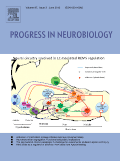
PROGRESS IN NEUROBIOLOGY
Fostering Insights into Cognitive ProcessesPROGRESS IN NEUROBIOLOGY is a prestigious journal dedicated to advancing the field of neuroscience, published by Pergamon-Elsevier Science Ltd. With an impressive impact factor, it stands as a critical resource for researchers, professionals, and students alike, featuring rigorous peer-reviewed articles that explore the latest developments in neurobiology. The journal has established itself as a leading publication, ranked in the Q1 category for Neuroscience (miscellaneous) and holding a notable 13/113 rank in General Neuroscience per Scopus metrics, placing it in the top 12% of its field. Since its inception in 1959, PROGRESS IN NEUROBIOLOGY has covered a wide array of topics, from molecular mechanisms to cognitive processes, fostering a comprehensive understanding of brain functions. While the journal is not open access, it ensures accessibility to profound knowledge through institutional subscriptions. Researchers and scholars will find critical analyses and innovative research that are pivotal for both foundational knowledge and cutting-edge investigations in the neuroscience realm.